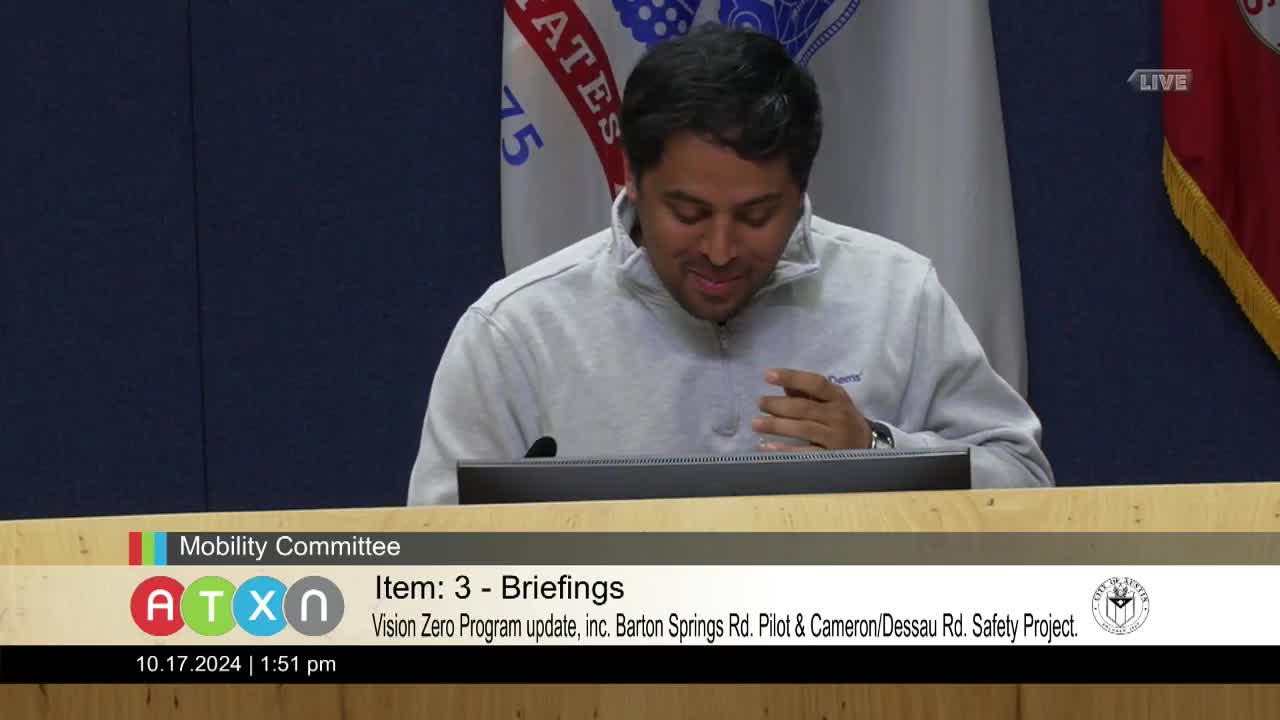City grapples with crash reporting failures after serious injury
October 17, 2024 | Austin, Travis County, Texas
This article was created by AI summarizing key points discussed. AI makes mistakes, so for full details and context, please refer to the video of the full meeting. Please report any errors so we can fix them. Report an error »

During a recent government meeting, council members discussed critical issues surrounding crash data collection and reporting, particularly in light of a serious incident involving a pedestrian in a crosswalk. The incident involved a restaurant worker who was struck by an SUV while returning to her vehicle at night. Following the crash, the Austin Police Department (APD) did not file a report, classifying the situation as a civil matter, which raised concerns about the adequacy of crash reporting protocols.
Council members expressed frustration over the lack of a formal crash report, especially since the pedestrian later suffered significant injuries, including a concussion and chronic pain. The discussion highlighted the implications of the Lisa Torrey Smith Act, which mandates stricter accountability for drivers who strike pedestrians in crosswalks. This law was referenced to question why APD did not run the license plate of the vehicle involved in the incident.
In response, city officials acknowledged the importance of accurate crash data and explained that APD relies on public safety personnel to assess the severity of injuries at the scene. They noted that while APD typically files reports for serious injuries, there are instances where injuries may not be immediately apparent, leading to underreporting. The officials emphasized their commitment to improving data collection by collaborating with Emergency Medical Services (EMS) and the Austin Fire Department (AFD) to gather information on incidents that may not be formally reported.
The meeting also touched on the Vision Zero initiative, aimed at eliminating traffic fatalities and serious injuries. Officials indicated that the Vision Zero dashboard reflects only certain types of incidents, which may not include all crashes, particularly those deemed minor or without visible injuries at the time of the incident.
The council members expressed a desire for better communication and follow-up procedures to ensure that all incidents are documented appropriately, especially when injuries develop after the fact. The discussion underscored the need for a comprehensive approach to traffic safety and data collection, as well as the importance of public awareness regarding reporting mechanisms for accidents.
Council members expressed frustration over the lack of a formal crash report, especially since the pedestrian later suffered significant injuries, including a concussion and chronic pain. The discussion highlighted the implications of the Lisa Torrey Smith Act, which mandates stricter accountability for drivers who strike pedestrians in crosswalks. This law was referenced to question why APD did not run the license plate of the vehicle involved in the incident.
In response, city officials acknowledged the importance of accurate crash data and explained that APD relies on public safety personnel to assess the severity of injuries at the scene. They noted that while APD typically files reports for serious injuries, there are instances where injuries may not be immediately apparent, leading to underreporting. The officials emphasized their commitment to improving data collection by collaborating with Emergency Medical Services (EMS) and the Austin Fire Department (AFD) to gather information on incidents that may not be formally reported.
The meeting also touched on the Vision Zero initiative, aimed at eliminating traffic fatalities and serious injuries. Officials indicated that the Vision Zero dashboard reflects only certain types of incidents, which may not include all crashes, particularly those deemed minor or without visible injuries at the time of the incident.
The council members expressed a desire for better communication and follow-up procedures to ensure that all incidents are documented appropriately, especially when injuries develop after the fact. The discussion underscored the need for a comprehensive approach to traffic safety and data collection, as well as the importance of public awareness regarding reporting mechanisms for accidents.
View full meeting
This article is based on a recent meeting—watch the full video and explore the complete transcript for deeper insights into the discussion.
View full meeting
